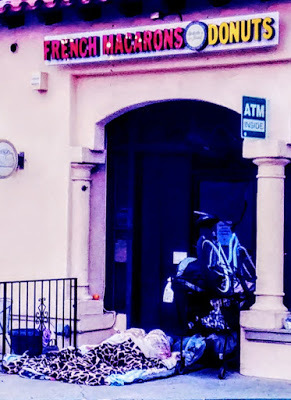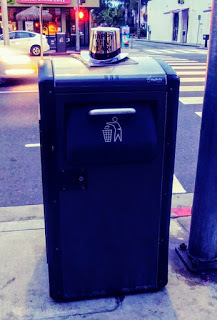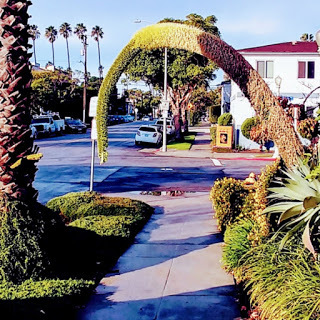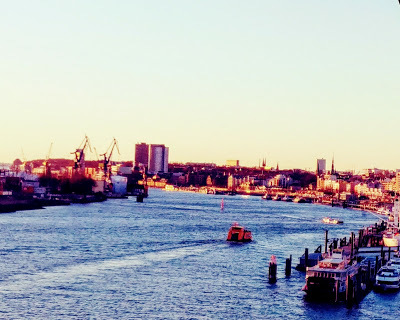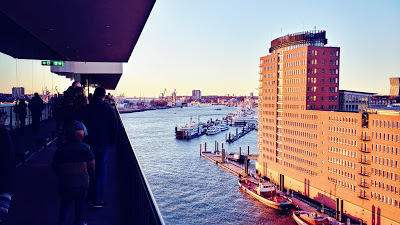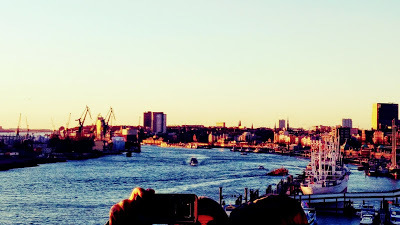R.L. Swihart's Blog, page 118
January 19, 2019
Dropped One Thing to Read Another: Eichmann in Jerusalem: The Banality of Evil
Always figured I'd get around to it. Saw the movie. The phrase, which she apparently regretted, stuck: The Banality of Evil. Anyway, padding off to bed (inspired by News & News), I thought: The timing seems right. Kindle had it, so now I do.
The "clips below are from the intro:
Introduction THE EXCOMMUNICATION OF HANNAH ARENDT In December 1966, Isaiah Berlin, the prominent philosopher and historian of ideas, was the guest of his friend, Edmund Wilson, the well-known American man of letters. An entry in Wilson’s diary mentions an argument between the two men. Berlin “gets violent, sometimes irrational prejudice against people,” Wilson noted, “for example [against] Hannah Arendt, although he has never read her book about Eichmann.” In a memoir in the Yale Review in 1987, Berlin made exactly the same charge against Wilson and elaborated upon this in a 1991 interview with the editor of Wilson’s diary.1 We don’t know the outcome of this quarrel. One thing we do know: more than three years after the publication of Hannah Arendt’s Eichmann in Jerusalem: A Report on the Banality of Evil first appeared in print, the civil war it had launched among intellectuals in the United States and in Europe was still seething. Describing the debate that raged through his own and other families in New York, Anthony Grafton later wrote that no subject had fascinated and aroused such concern and serious discussion as the series of articles Hannah Arendt had published in The New Yorker about the Eichmann trial, and the book that grew out of them. Three years after the publication of the book, people were still bitterly divided over it. No book within living memory had elicited similar passions. A kind of excommunication seemed to have been imposed on the author by the Jewish establishment in America. The controversy has never really been settled. Such controversies often die down, simmer, and then erupt again. It is perhaps no accident that at this time of a highly controversial war in Iraq, Arendt’s books are still widely read and that, even though close to 300,000 copies of her book on Eichmann alone have so far been sold, this new edition is now published by Penguin.
*
Evil comes from a failure to think. It defies thought for as soon as thought tries to engage itself with evil and examine the premises and principles from which it originates, it is frustrated because it finds nothing there. That is the banality of evil.
*
Dostoevsky would not have regarded Arendt’s “banality of evil” as a cheap catchword, as Gershom Scholem did in an open letter to Arendt accusing her of heartlessness. When the devil visits Karamazov, he turns out to be a shabby, stupid, and vulgar lout.
*
The scandal soon grew to outsize proportions. Saul Bellow excoriated Arendt in Mr. Sammler’s Planet for using the tragic history of the Holocaust to promote the foolish ideas of Weimar intellectuals. Banality is the adopted disguise of a very powerful will to abolish conscience.
Published on January 19, 2019 12:11
Poinsettias & The Green Belt
Official? Unofficial? Symbolic or just a systemic way to get rid of someone's post-Xmas poinsettia's?
Either way, I hope they grow.
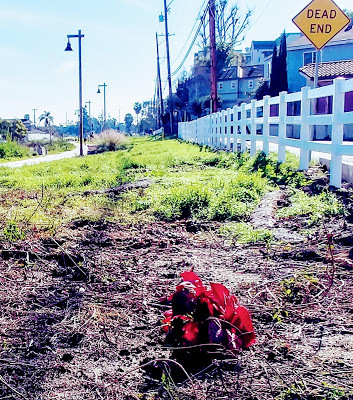

Published on January 19, 2019 11:54
MUTT & MORE (2019)
Published on January 19, 2019 11:49
January 13, 2019
There's Oz, Then There's Borges
Oz was OK, but I eventually got tired of it: weaving (and never leaving) a lot of the same material over and over. A short novel but a lot seemed like filler. And the tease between Atalia and Shmuel: OK, I guess, but it too sometimes felt like filler. Now Borges' little "Three Versions of Judas" -- that's a nut to keep returning to (see "clip" below).
From Borges Judas: The Ending:
From Borges Judas: The Ending:
Drunk with sleeplessness and his dizzying dialectics, Nils Runeberg wandered the streets of Malmo, crying out for a blessing -- that he be allowed to share the Inferno with the Redeemer.
He died of a ruptured aneurysm on March 1, 1912. Heresiologists will perhaps remember him: he added to the concept of the Son, which might have been thought long spent, the complexities of misery and evil.
Published on January 13, 2019 09:15
Walking: Before the Rain
PHILZ. Finished Oz's Judas and only scratched my next stop: John Hawkes' Travesty. Not sure about the text I only tasted: so-so thus far. But I liked the epigraphic quote from Camus' Fall:
You see, a person I knew used to divide human beings into three categories: those who prefer having nothing to hide rather than being obliged to lie, those who prefer lying to having nothing to hide, and finally those who like both lying and the hidden. I'll let you choose the pigeonhole that suits me.
***Fantastic light this morning: rosy highlights in the Heights, downtown awash in the white light of a rising sun.
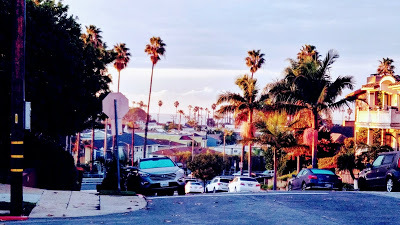

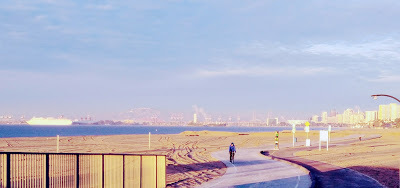
Published on January 13, 2019 09:01
January 12, 2019
Walking: Scattered Images: After New Year's and Before School
Published on January 12, 2019 13:02
Between Rains
Published on January 12, 2019 12:59
Clip from Oz's "Judas"
'The real tragedy of humankind,’ Shealtiel used to say, ‘is not that the persecuted and enslaved crave to be liberated and to hold their heads high. No. The worst thing is that the enslaved secretly dream of enslaving their enslavers. The persecuted yearn to be persecutors. The slaves dream of being masters. As in the book of Esther.’
Published on January 12, 2019 12:57
January 5, 2019
Franz Nölken (1884 - 1918)
Franz Nölken (5 May 1884, Borgeln, North Rhine-Westphalia[1] - 4 November 1918, near La Capelle) was a German Expressionist painter; occasionally associated with Die Brücke, an artists' society in Dresden.
Biography
When he was still a small child, his family moved to Hamburg. At the age of sixteen, he began attending the Johanneum, a liberal arts gymnasium. On the advice of Alfred Lichtwark, the Director of the Hamburger Kunsthalle, he took classes from Arthur Siebelist, who eschewed the Academic approach and took his students to paint en plein aire.He joined the Hamburgischer Künstlerklub [de] in 1903 and, the following year, had his first exhibition at the prestigious Galerie Commeter [de] with fellow students Friedrich Ahlers-Hestermann, Fritz Friedrichs, Walter Alfred Rosam and Walter Voltmer [de].[1] He undertook a study trip to his birthplace, near Soest, in 1905, where he met the businessman, Ernst Rump [de], a supporter of the arts who would later become his patron. Together with Ahlers-Hestermann and Rosam, he went to Paris in 1907 and mingled with the artists at Le Dôme Café.[1]In 1908, at the invitation of Karl Schmidt-Rottluff, he joined Die Brücke and exhibited with them in 1909 and 1910. He resigned in 1912, but would return later. Meanwhile, in 1909, he made another trip to Paris, where he studied with Henri Matisse at his short-lived Académie.[1] Upon returning from Paris, he took Anita Rée as a student and, together with Ahlers-Hestermann, created a studio. The arrangement was brief, as Rée apparently fell in love with Nölken and her affections were not returned.[2]He became a teacher at a private art school for women in 1912. He also made friends with the composer, Max Reger (Nölken was an excellent amateur pianist),[1] and painted numerous portraits of him, one of which was purchased by one of Nölken's patrons, Oskar Troplowitz, to hang in his billiard room. In 1914, he made another trip to Paris.He almost avoided service in World War I, but was drafted in 1917 and killed a week before the war ended,[1] near La Capelle on the Belgian border. Two streets are named after him, in the Barmbek district of Hamburg and in Soest.
[From Wikipedia]
Published on January 05, 2019 11:29
January 4, 2019
Hamburg: Views from the Elbphilharmonie
Published on January 04, 2019 16:13


